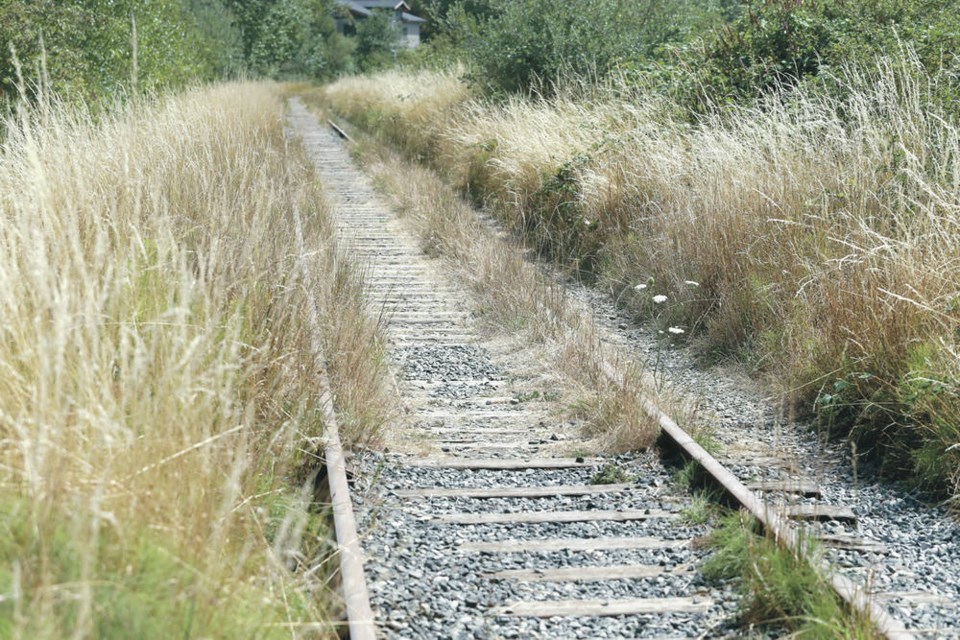A commentary by a former member of Parliament for Victoria.
Recently, the province quite reasonably asked Capital Regional District board members to speak with one voice and articulate their transportation priorities in the regional district to ensure they are funding the appropriate infrastructure.
The CRD transportation committee, in a first meeting, agreed with previous studies that demonstrate that electric buses in dedicated bus lanes would be the most cost effective way to reduce congestion, coupled with improvements to the regional trail network.
That seemed clear … until it wasn’t. In a less-than-sober second thought, some directors piled in other priorities, leaving us to wonder what it means to have a priority. Thrown in now, along with other priorities, the transportation committee asked that the province “maintain/upgrade the E&N Rail Corridor.”
View Royal Mayor David Screech, chairman of the transportation committee, said that although rapid bus lanes and trails were first identified as priorities, there was a fear by some of the loss of the rail corridor if it didn’t appear in the priorities.
This need not happen. There is another way to protect the corridor and ensure that its continuity is maintained. It can become an active transportation corridor.
There is a line of thinking, particularly among elected officials, that if the rail service function of the corridor is set aside, then the continuity of the corridor will be lost.
First Nations, for instance, may want back the lands they were forced to give up. The rails, however, do not have to be in place to preserve the right-of-way for future rail service. It is our understanding that when a railway is decommissioned the right-of-way can still be protected for future use for rail service. As with the Okanagan rail trail, there can be an agreement that the trail can be converted back to rail if and when rail becomes viable.
At this time, diesel rail doesn’t make economic or environmental sense on this right-of-way; the province, through their studies, knows that and every CRD director who has read the reports should as well. Every study commissioned in the past 20 years has come to the same conclusion.
This rail corridor was built when the competition was wagon roads and the bicycle had just been invented. Bicycle use is now booming and is making an important and growing contribution as a transportation and recreational mode. Demand for wider trails is growing and will continue to grow. It is good public policy to support that demand.
The old heavy gauge train doesn’t make economic sense today on that corridor, especially when we look at the success of bus rapid transit with electric buses. There is no option using the corridor which can compete with buses on the Trans-Canada Highway. The other options which have been studied for the corridor are train commuter service and a busway.
According to the province’s South Island Transportation Strategy Technical Report No. 2, the rail commuter service would carry 1,600 passengers per day and cost $595 million; the busway would cost $420 million to $520 million and would carry 5,700 passengers per day; the Douglas-Westshore Bus Rapid Transit Network on the Trans-Canada Highway will carry 15,850 passengers per day and will cost only $40 million.
There are also large investments in electric buses available from the federal government ($2.75 billion) and from the province ($217.7 million). The idea that we would invest in expensive alternatives which would compete with the much cheaper, subsidized, express bus option is just not sensible.
The CRD’s transportation committee has access to that information and doubtless it influenced their choice of buses as the best option. Maybe the impact of the pandemic on the provincial budget hasn’t dawned on CRD directors yet!
Will the province have the money to provide a rapid bus system and also expand trail capacity and indulge the CRD in an expensive parallel, competing rail fantasy?
That parrot is dead, as John Cleese says in the Monty Python sketch; resting it is not! The funding envelope for transportation is finite; that’s why the CRD was asked for priorities in the first place.
In today’s rapidly developing transportation environment, the corridor represents an incredible opportunity to think differently and put into action the province’s active transportation policies with the goal of doubling active transportation capacity by 2030.
- - -
Send a letter to the editor: letters@timescolonist.com



